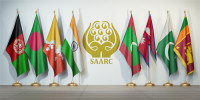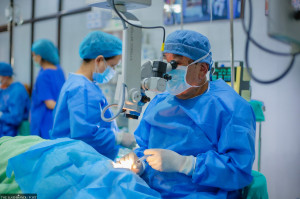Opinion
Fish as food
Aquaculture is the rearing of fish in water under controlled conditions. It can be done in fresh water (inland water), brackish water and marine water (sea).
Nanu Jha
Aquaculture is the rearing of fish in water under controlled conditions. It can be done in fresh water (inland water), brackish water and marine water (sea). Fish is the main source of protein for more than 1 billion people across the world, especially in the developing countries. In the US, fish consumption has been increasing rapidly due to growing awareness of its health benefits. Fish contains about 14-21 percent protein. This is significantly higher than milk which contains 3-5 percent protein and cereals (7-9 percent). Fish contains unsaturated fatty acids which are good for people who have undergone bypass surgery and are prone to coronary heart disease. Vitamin E is present in fish and it is essential as an antioxidant.
The cost of construction and operation of artificial fish farms should be as low as possible. There should be abundant water so that daily exchange of water is possible and minimum facilities for aeration of water are possible. Flooding possibilities should be avoided because floods will increase detritus effects and erosion potential besides introducing undesirable species into the fish pond. The site should be close to a road for proper transportation of construction materials and feed to the farm and products to market. It is good to use ground water for aquaculture as it is more uniform, free from insects and pests, less polluting, and has a constant temperature. Liming helps to maintain proper sanitation in the fish pond; it is also used to correct acidity of the soil and water. It also helps to speed up the decomposition of organic matter. Decomposition results in the conversion of nutrients in the soil.
Increased application
With advancements in the field of genetic engineering, its application has also increased. Aquatic animals are being engineered to increase aquaculture production. Transgenic fishes are being promoted as the first marketable transgenic animals for human consumption. One of the most important differences between fish and other terrestrial animals that are targeted for cultivation and genetic improvement is that fishes usually have higher levels of genetic variation and, hence, greater scope for selection than most mammals or birds.
Breeders now use bio-technology to introduce new characteristics to improve the quality of fish, growth, resistance and productivity. Using gene transfer techniques, scientists have created a genetically engineered variety of Atlantic salmon that grows to market weight in about 18 months. Usually, the fish takes 24-30 months to reach marketable size. Fish stop growing after attaining a particular size. Fish farmers raise these so-called transgenic fish because they grow faster, are cheaper to raise because they consume less food, and grow to full size in half the time. There are 22 species of fishes and two species of prawns which are suitable for fresh water aqua farming as they are economically viable. Intensive agricultural practices have led to environmental problems. Extensive use of pesticides has brought adverse effect on fisheries. Fish culture in a planned manner will conserve natural resources.
Agriculture modernisation project
In Nepal, fish farming is done in ponds, rice fields, enclosures, cages, reservoirs, lakes, raceways and marginal swamps. The major varieties of fishes reared are carp like common carp, Chinese major carp (silver carp, grass carp and bighead carp), and Indian major carp (rohu, catla and mrigala). They are grown in warmer climates. Rainbow trout is grown in cooler water. In addition, Nile tilapia and cat fish (Clarid and Pangassid) are emerging as promising fishes for culture in warm conditions. Commercial cold water fish culture and rainbow trout fish farming is spreading in the mid-hills. Indian major carps and Chinese major carps are being commercially grown in the Tarai very successfully.
Fish farming accounts for 1.32 percent of the National Gross Domestic Product and 4.22 percent of the Agricultural Gross Domestic Product. The 10-year Prime Minister Agriculture Modernisation Project has envisaged giving a further boost to commercialise aquaculture. The project will provide support to buy machinery and tools to manufacture fish feed besides providing fish feed, constructing fish ponds, establishing deep boring to supply water to fish ponds and providing technical knowledge. An individual fish farmer or a group of farmers or a firm can get Rs100,000 to construct a pond on 1 hectare of land. Further, they will get a 50 percent subsidy to purchase machinery and tools, and a 75 percent subsidy to install deep boring to supply water to the pond. A plot must be at least 6 hectares in size to qualify for grants under the project.
A vibrant enterprise
The average productivity of pond fish farming is 5.760 tonnes per hectare while an individual farm can produce up to 66 tonnes of fish per hectare. In Vietnam, the productivity is 800 tonnes per hectare. This shows that there is big scope in Nepal to enlarge fish farming by adopting advanced technology. High-tech fish farming can increase productivity and produce a high rate of return on investment. Therefore, fish farming can very soon be a vibrant enterprise in the country.
Cultivable land in the country is shrinking due to plotting for housing construction. If agricultural land is being plotted without any regulation, it will be very harmful from both the farmers’ and national point of view. After some years, farmers will find no land to increase their farm size for large-scale production, and this can be a major problem in shifting from subsistence agriculture to commercial agriculture in Nepal. The number of people engaged in aquaculture has increased significantly after 2013-14 due to better and continuous returns from fish farming compared to traditional and seasonal crops. Fish farming is gaining momentum, but more needs to be done for its expansion as an industry involving high technology and sustainability to produce protein to meet the challenge of food security for millions of people.
- Jha is an agricultural economist and adjunct professor at the Himalayan College of Agricultural Science and Technology




 10.12°C Kathmandu
10.12°C Kathmandu










